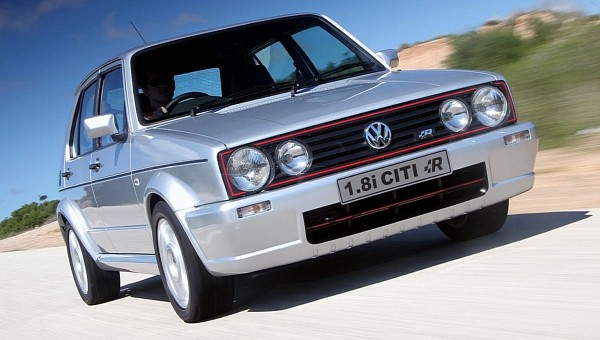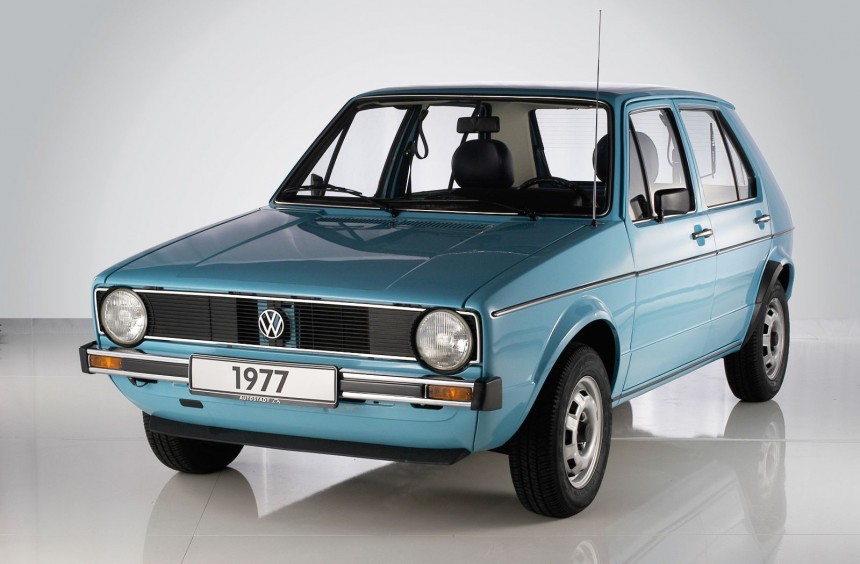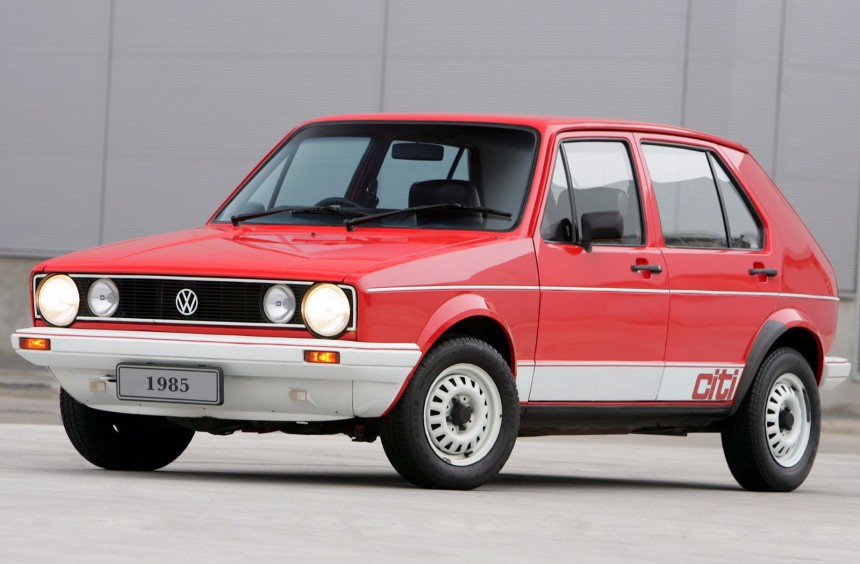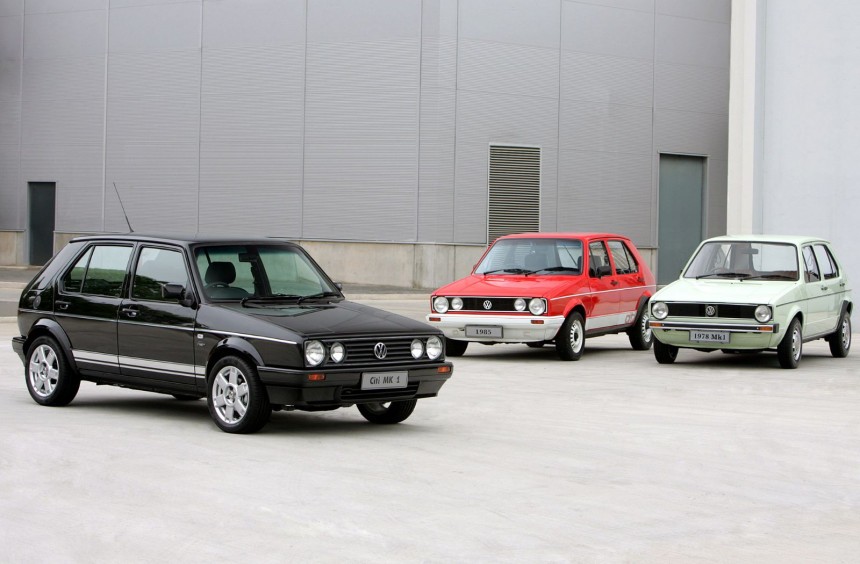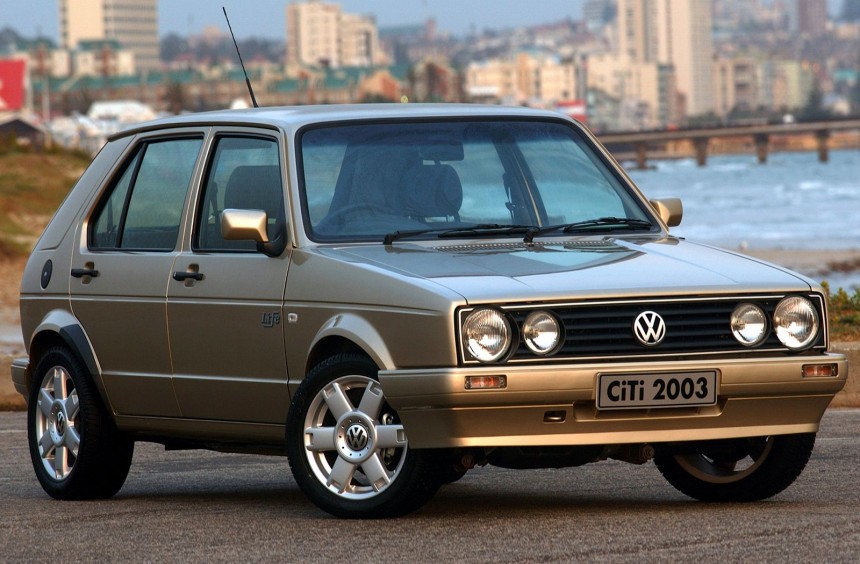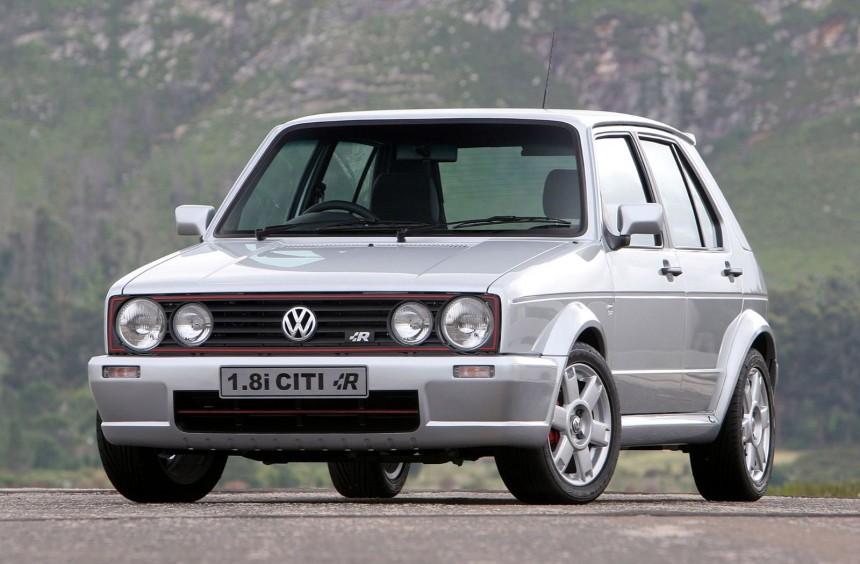After a nine-year production that spawned over six million units worldwide, the widely-popular, first-generation Golf was officially discontinued in 1983. However, Volkswagen’s South African branch couldn’t let go of the iconic model, continuing to develop and mass-produce the Mk1 for the next 25 years.
Ever since the 1950s, Volkswagen began developing potential replacements for the popular Type 1 (better known as the Beetle), but it would take another 20 years to conceive a suitable candidate.
Designed by the famous Italian stylist Giorgetto Giugiaro, the Beetle’s successor debuted in 1974 and, like its now-iconic sibling, it was a huge success right from the start. Christened Golf, the little hatchback initially available with either two or four doors, was praised for its build quality and affordable price, which attracted potential buyers from all over the world.
By 1981, Mk1 Golf was being assembled in eight different countries, and Antarctica was the only continent where it wasn’t sold. It was now also available as a convertible, sedan (Jetta), and pickup (Caddy), as well as a sporty hot hatch called GTI.
In September 1983, Volkswagen ceased producing the model and introduced the improved Mk2 several months later. Some countries continued to assemble the Mk1 for a few more years, but in South Africa, the model was kept alive until 2009.
In the African country, production of the Golf started in 1978 at the Uitenhage (Kariega) plant – the biggest car factory on the continent. Like in other parts of the world, the economic hatchback was a huge success both locally and in neighboring countries.
However, when VW introduced the second-generation Golf in 1984, it came with a price increase that was projected to significantly affect sales on the continent.
To keep up with the demand for a cheap, entry-level vehicle, the South African branch decided to keep the Mk1 alive and sell it alongside the new model – at least for a few years.
For months, the South African marketing department worked on a campaign meant to make the aging Mk1 more attractive to potential buyers. The first attempt was to focus solely on making it cheaper than ever before, so they put together the most basic, stripped-down version possible and called it Econogolf.
This idea didn’t live long, and eventually, the marketing team went for a different kind of re-branding, creating a car that was still basic (and thus cheap), but looked more fun and youthful.
Named Citi Golf, the reborn Mk1 was available only with four doors and three paint choices: red, yellow, or blue. In addition, its wheels were painted white, and the body was decorated with some cheerful-looking decals. Launched in 1984, it proved to be a winning formula as sales were encouraging from the get-go.
Initially, it was powered by a slightly modified version of the old 1.3-liter carbureted four-cylinder, but in 1985, a 1.6-litter was made available on a new version called Citi Golf Sport.
The original idea was to continue Mk1 production for two or three years, but the Citi was so popular that VW South Africa decided to not only continue building it, but also improve its design.
In 1988, additional tooling from plants that ceased production of the first generation was imported, and the Citi Golf received a facelift that made it look more like the Mk2. That year, the Sport version also received a new 1.8-liter engine and five-speed manual borrowed from the Mk2 GTS.
Then, in 1990, the Citi range welcomed its first true hot-hatch member. Dubbed Citi CTi, it was basically the 1982 Mk1 GTI with minor aesthetic improvements. Powered by the aforementioned model’s 110-hp, (112 ps 1.8-liter, fuel-injected engine mated to a five-speed manual), it was a cheaper alternative for the second-generation GTI
After the 1990 facelift, the Citi range continued to be produced and exported in several African countries for the next decade, without major improvements.
It seemed like the end of the line was near for the venerable platform, but VW South Africa had no plans to drop its popular model just yet and introduced a new facelift in 2004, then a third one in 2006.
Though the exterior look of the Citi remained largely unchanged, with the only notable improvement being a new slightly-curved, heated rear window, the improved cars were extensively modernized inside. Engineers managed to adapt the modern dashboard from the Škoda Fabia, added an Mk4 Golf steering wheel (on some versions), and completed the look with modernized seats.
Throughout the years, the Citi Golf lineup included some interesting versions. We already talked about the Sport and CTI, but unquestionably the coolest Citi, and even the coolest Mk1, ever produced was the 2006-2008 1.8i R.
As the name implies, it was powered by a fuel-injected 1.8-liter shared with the iconic first-gen GTI, but upgraded with a new camshaft and a sportier exhaust that pushed output to 120 hp (121 ps).
Furthermore, the exterior featured unique bumpers, side skirts, a rear spoiler, and wider wheel arches that added just the right amount of touch to the iconic lines of the first GTI. Inside, the Fabia-derived dashboard, a new steering wheel, and leather-trimmed seats made the retro-modern hot hatch even more appealing.
VW South Africa finally discontinued the Citi Golf in 2009, the year when VW AG launched the sixth generation of the Golf. During a 25-year production run that totaled more than 377,000 units, the Citi proved that a platform designed in the 1970s can be successful in the 21st century.
You can learn more about the Citi Golf in the YouTube video below by PATINA.
Designed by the famous Italian stylist Giorgetto Giugiaro, the Beetle’s successor debuted in 1974 and, like its now-iconic sibling, it was a huge success right from the start. Christened Golf, the little hatchback initially available with either two or four doors, was praised for its build quality and affordable price, which attracted potential buyers from all over the world.
By 1981, Mk1 Golf was being assembled in eight different countries, and Antarctica was the only continent where it wasn’t sold. It was now also available as a convertible, sedan (Jetta), and pickup (Caddy), as well as a sporty hot hatch called GTI.
In September 1983, Volkswagen ceased producing the model and introduced the improved Mk2 several months later. Some countries continued to assemble the Mk1 for a few more years, but in South Africa, the model was kept alive until 2009.
The origins of the decision
However, when VW introduced the second-generation Golf in 1984, it came with a price increase that was projected to significantly affect sales on the continent.
To keep up with the demand for a cheap, entry-level vehicle, the South African branch decided to keep the Mk1 alive and sell it alongside the new model – at least for a few years.
From Econogolf to Citi Golf
This idea didn’t live long, and eventually, the marketing team went for a different kind of re-branding, creating a car that was still basic (and thus cheap), but looked more fun and youthful.
Named Citi Golf, the reborn Mk1 was available only with four doors and three paint choices: red, yellow, or blue. In addition, its wheels were painted white, and the body was decorated with some cheerful-looking decals. Launched in 1984, it proved to be a winning formula as sales were encouraging from the get-go.
Initially, it was powered by a slightly modified version of the old 1.3-liter carbureted four-cylinder, but in 1985, a 1.6-litter was made available on a new version called Citi Golf Sport.
The first local facelift and the revival of the GTI
In 1988, additional tooling from plants that ceased production of the first generation was imported, and the Citi Golf received a facelift that made it look more like the Mk2. That year, the Sport version also received a new 1.8-liter engine and five-speed manual borrowed from the Mk2 GTS.
Then, in 1990, the Citi range welcomed its first true hot-hatch member. Dubbed Citi CTi, it was basically the 1982 Mk1 GTI with minor aesthetic improvements. Powered by the aforementioned model’s 110-hp, (112 ps 1.8-liter, fuel-injected engine mated to a five-speed manual), it was a cheaper alternative for the second-generation GTI
Soldiering on into the 21st century
It seemed like the end of the line was near for the venerable platform, but VW South Africa had no plans to drop its popular model just yet and introduced a new facelift in 2004, then a third one in 2006.
Though the exterior look of the Citi remained largely unchanged, with the only notable improvement being a new slightly-curved, heated rear window, the improved cars were extensively modernized inside. Engineers managed to adapt the modern dashboard from the Škoda Fabia, added an Mk4 Golf steering wheel (on some versions), and completed the look with modernized seats.
Citi 1.8i R: The coolest mass-produced Mk1
As the name implies, it was powered by a fuel-injected 1.8-liter shared with the iconic first-gen GTI, but upgraded with a new camshaft and a sportier exhaust that pushed output to 120 hp (121 ps).
Furthermore, the exterior featured unique bumpers, side skirts, a rear spoiler, and wider wheel arches that added just the right amount of touch to the iconic lines of the first GTI. Inside, the Fabia-derived dashboard, a new steering wheel, and leather-trimmed seats made the retro-modern hot hatch even more appealing.
VW South Africa finally discontinued the Citi Golf in 2009, the year when VW AG launched the sixth generation of the Golf. During a 25-year production run that totaled more than 377,000 units, the Citi proved that a platform designed in the 1970s can be successful in the 21st century.
You can learn more about the Citi Golf in the YouTube video below by PATINA.
